
Section G
Chapter 71 - A Treasure Map
This final section is a collection of things that need to be highlighted since they shed light on the history of Jerusalem, but were not covered elsewhere in this book.
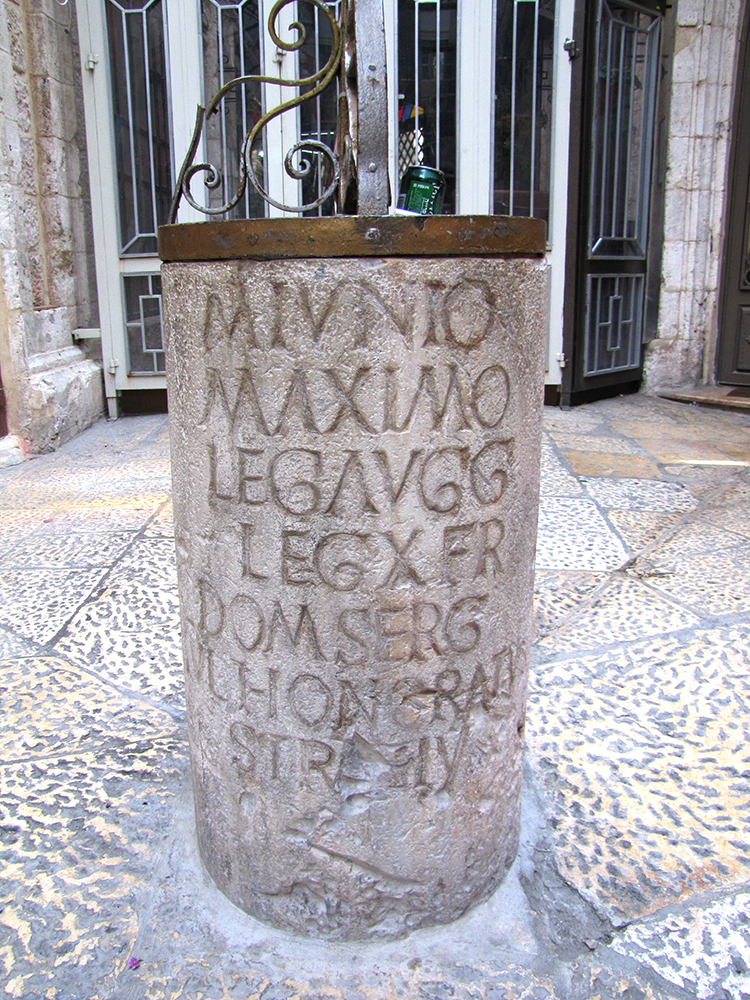
This Roman column was set in place around 200 AD near the camp of the Tenth Roman Legion, which had been stationed in Jerusalem since 70 AD. Today this pillar is located in the Christian Quarter at an intersection of four covered streets, which is up a narrow road going north, just inside the Jaffa Gate. The inscription reads:
Marco Iunio
Maximo
Legato Augustorum
Legionis X Fretensis
C. Domitius Sergius
Antoninianae
Strator eius
The inscription on the column recognizes Marcus Iunius Maximus who was the governor of the province of Judea and commander of the Tenth Roman Legion.
Marcus Maximus is identified by two titles:
1. He is “Legate of the Augusts” (Legato Augustorum). Being a legate means he held the office of general in the Roman army and that he was from the senatorial class. In this case, he was also appointed as the Governor of Judea.
2. He is also the general and commander of the Tenth Roman Legion known as “Legio X Fretensis,” or “Tenth Legion of the Sea Strait”. This was the legion (about 4,500 men) organized by Augustus in 40 BC to fight during the Civil War against Marc Antony, who attempted to dissolve the Roman Republic. The symbol of the Tenth Legion of the Sea Strait was a bull, a ship, and the god Neptune. This Tenth Legion was stationed in Jerusalem for 200 years and is last recorded to exist around 410 AD.
The emperor, or “Augusts” referred to in the phrase “Legate of the Augusts” would have been Septimius Severus. The column and inscription were erected by C. Domitius Sergius Honoratus, (“C. Domitius Sergius Antoninianae” in the fifth and sixth lines), one of Marcus Maximus’ aids.
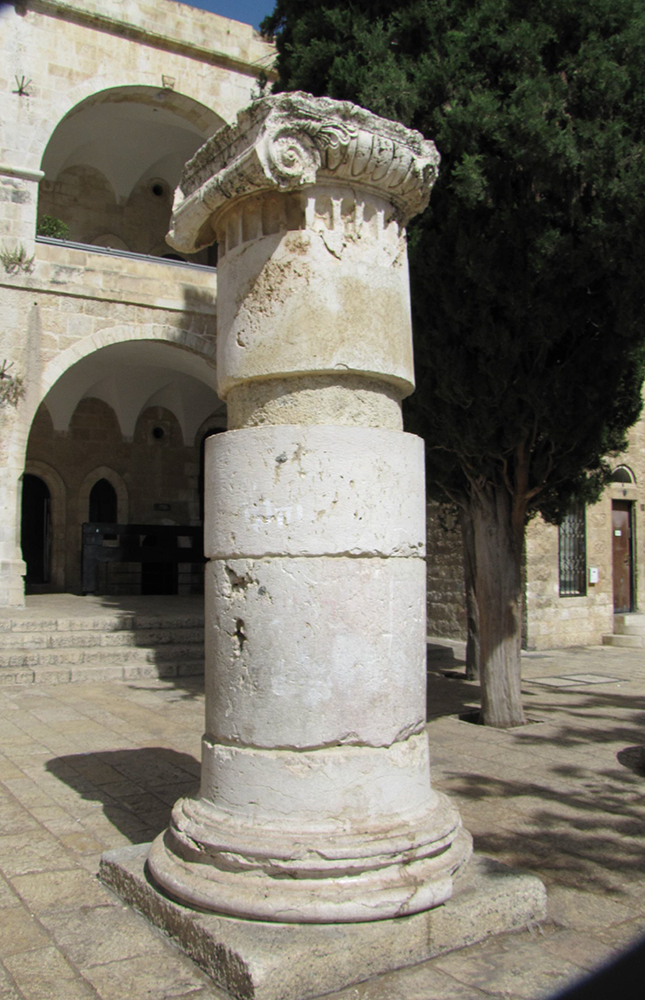
A Roman column stands in the Batei Mahase Square with the arches of the Rothschild House (built in 1871) in the background. Scratched on the drum of this Ionic capital is the Roman numeral 9, written “VIIII”. The number 9 is a reference number engraved by the designers of the column to indicate to the builders where this column should be positioned. The placement of the number on the drum indicates that this portion of the column was positioned at the top of a column that could have been 30 feet tall.
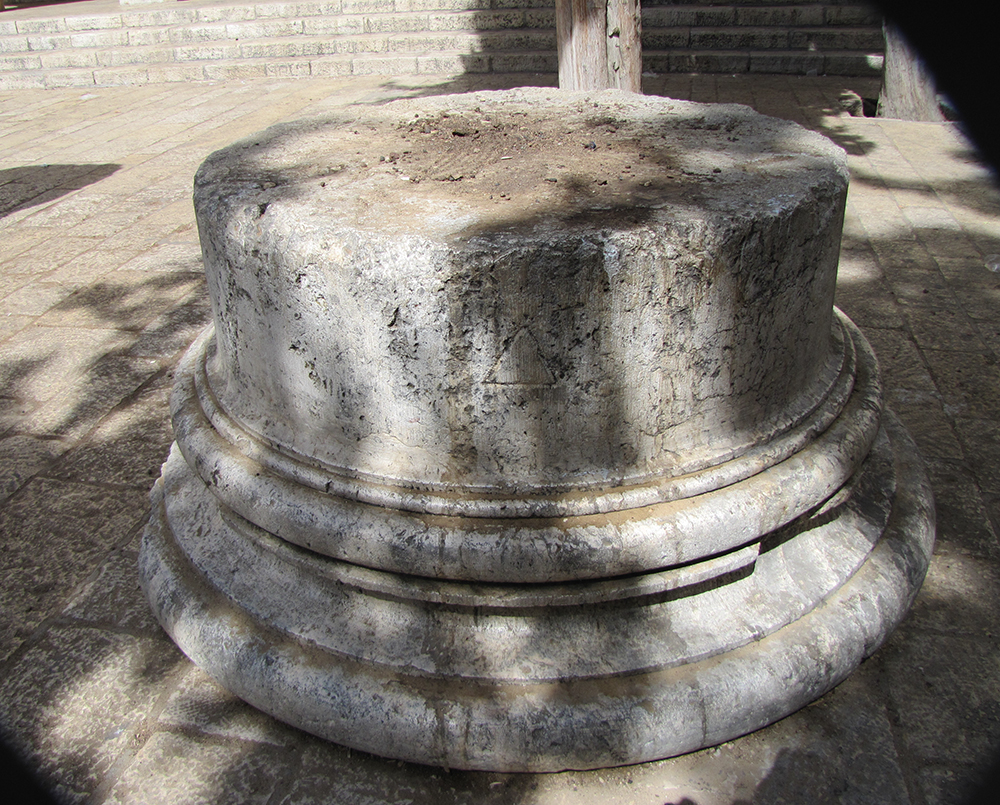
This is an Attic base of a Roman column next to the column above. The number 4 is inscribed on the second layer on the coved base as “Δ”, which is the Greek letter Delta. The number indicates that this column base was the fourth in a row of columns. It has not yet been determined which building these columns belonged to.
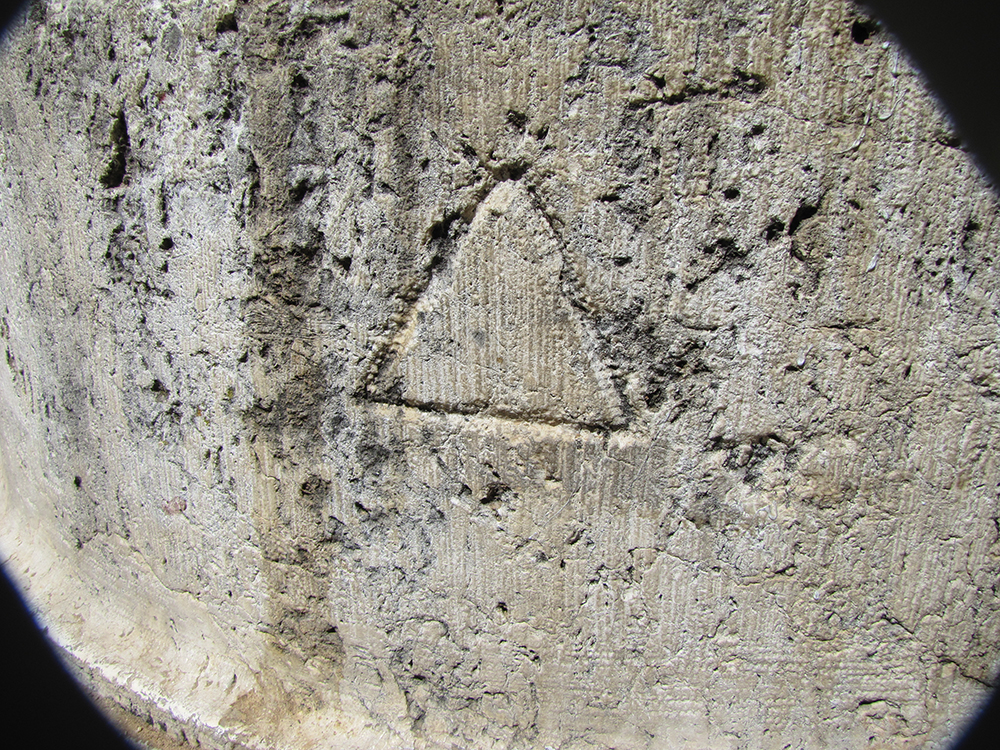
The Roman inscribed Delta which represents the number 4. This would have been the fourth column in a series of columns.
This Roman column from the reign of Vespasian (69-79 AD) and his son Titus (79-81 AD), was found built into the foundation of a Umayyad building constructed by the Muslims around 661-700 AD. This pillar mentions Vespasian, Titus, Lucius Flavius Silva (commander of the Tenth Legion from 73-80 AD), and the Tenth Legion itself. Notice the fifth line has been chiseled off to remove Lucius’ name. This column was probably originally part of the Cardo columns and was likely set in place by the Romans around 79 AD. The inscription and its translation are below.
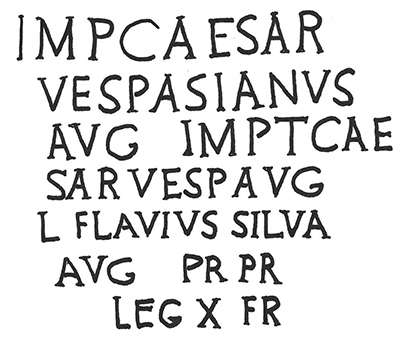
The translation is:
Imperator Caesar
Vespasianus
Augustus, Imperator Titus Caesar
Vespasianus Augustus Filius
[Lucius Flavius Silva legatus]
Augusti pro praetore
Legio X Fretensis
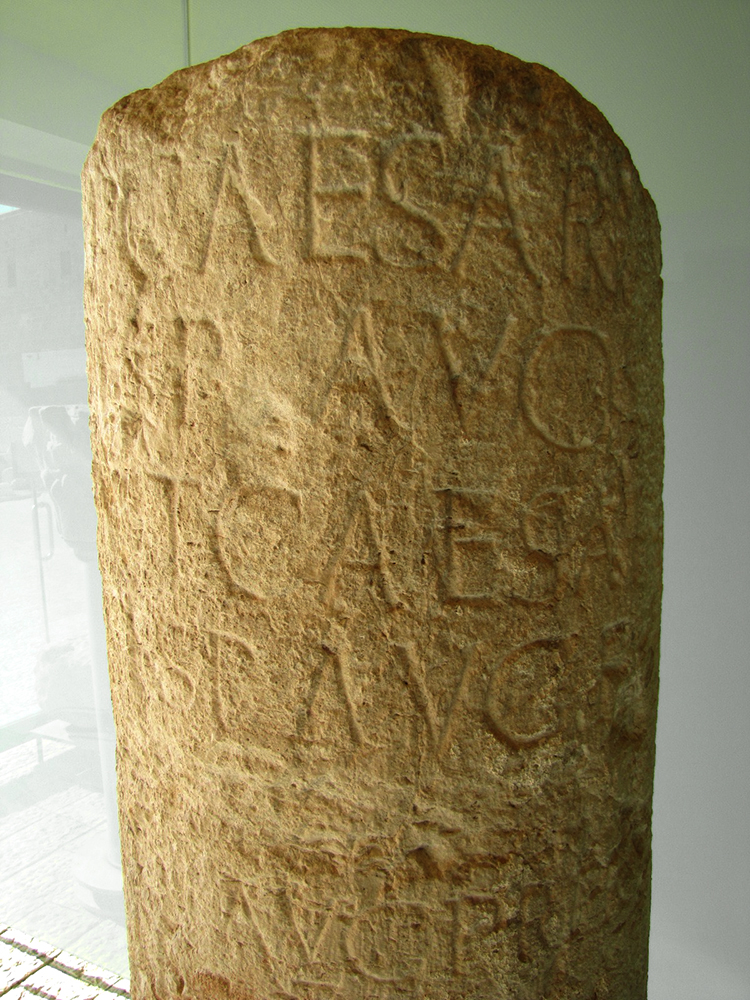
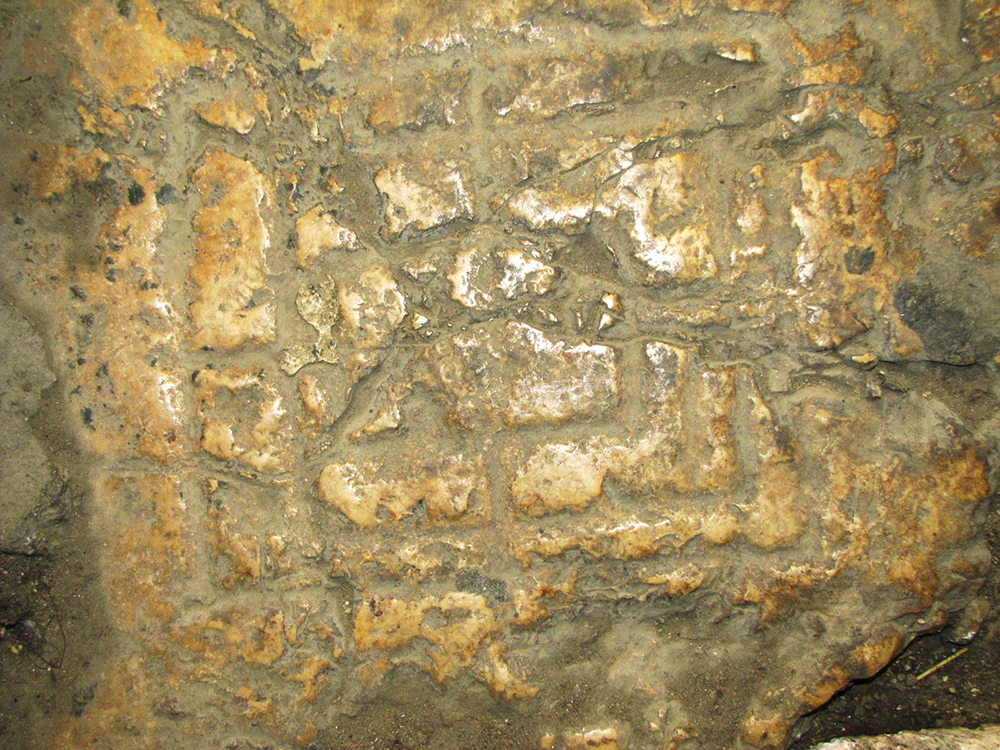
A Roman street game marked in the pavement of the Cardo in the Jewish Quarter. The square shapes cut inside of each other provided the playing spaces of a game used sometime after 135 AD.
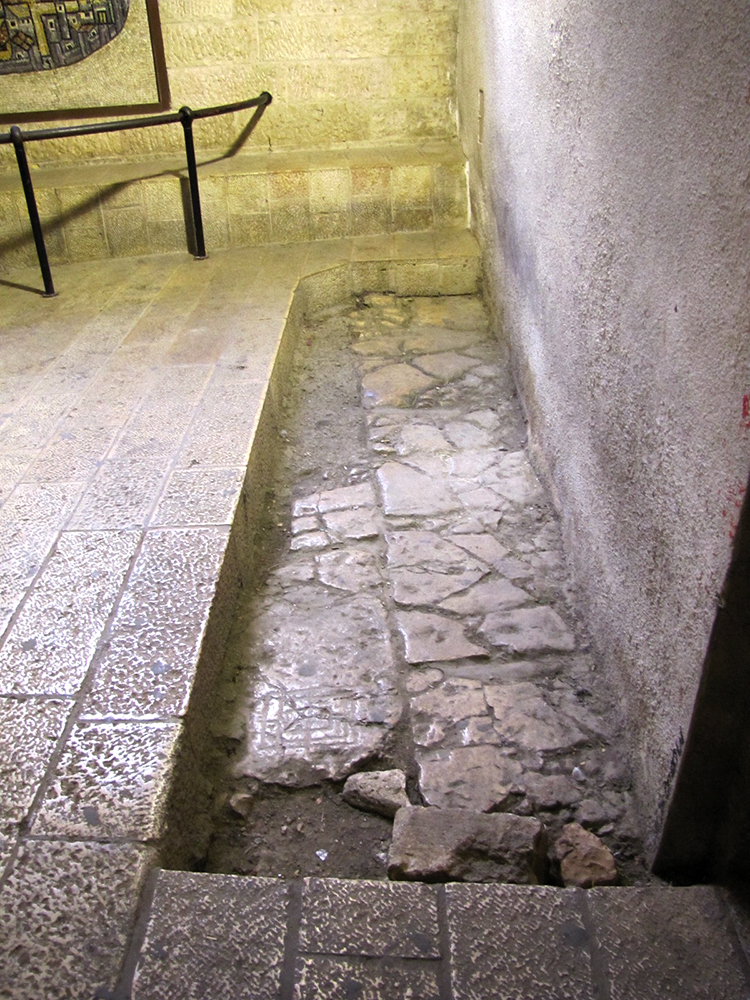
The square Roman game on the original Cardo pavement stones.
The original Cardo pavement is preserved in this photo with the Roman game board cut into the lower left stone of the original street.
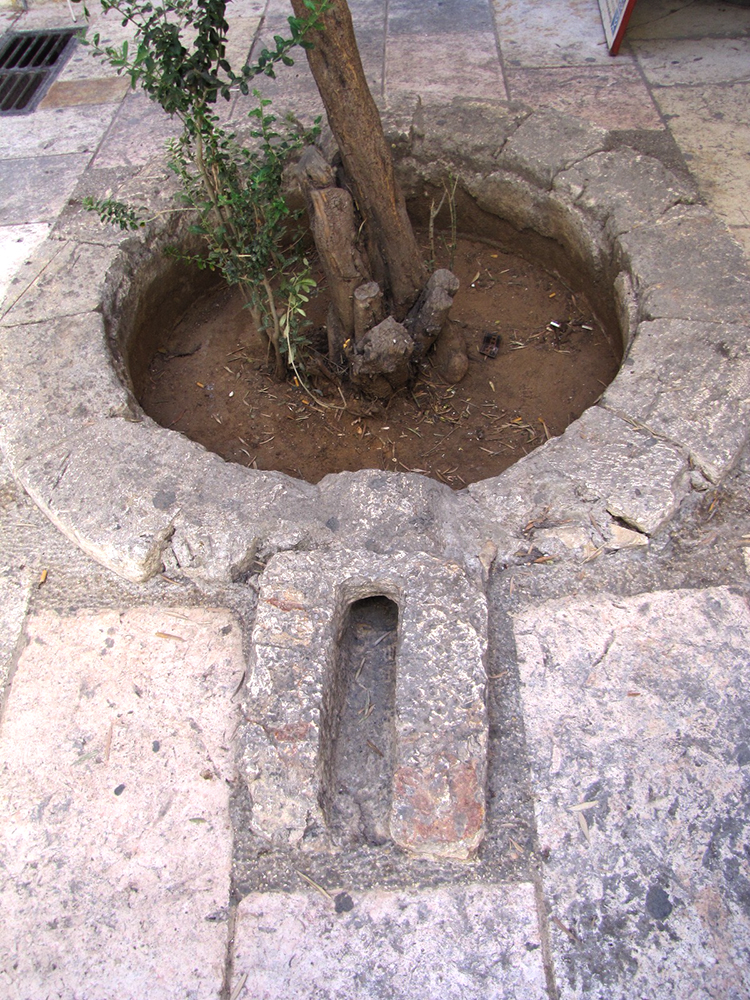
An ancient wine press, or possibly a well that provided access to a cistern below, sets in the modern street of the Jewish Quarter as large planter for a tree.
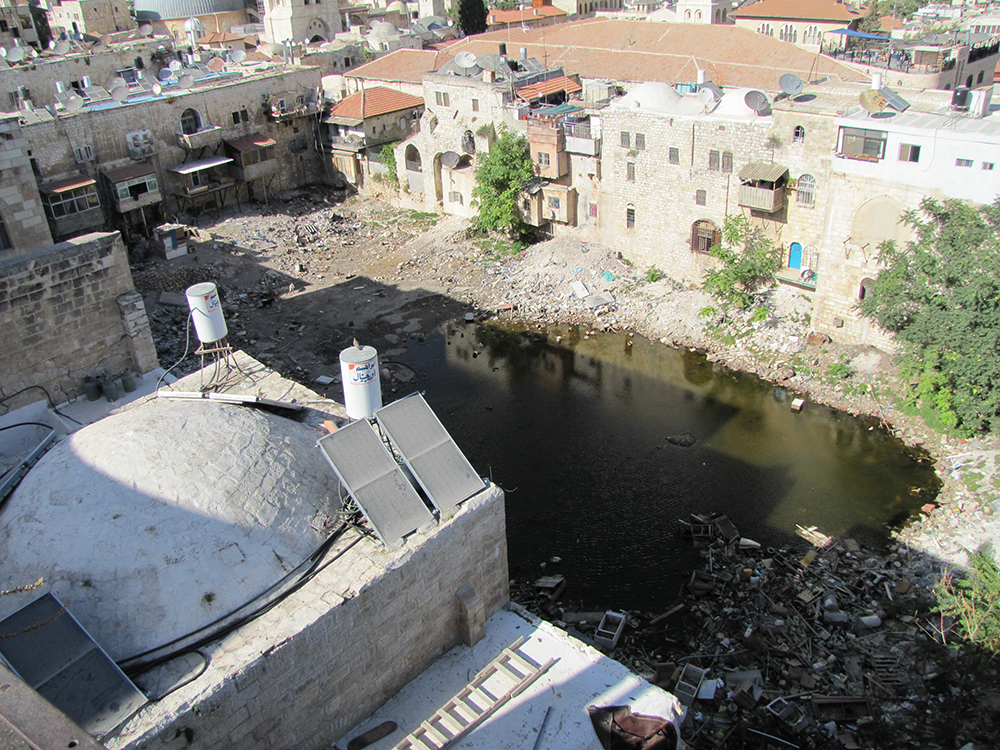
This is the view of what is called "Hezekiah's Pool" but is thought to be a reservoir from the time of Herod that received water from aqueducts that are still visible outside the Jaffa Gate. It also may have been a quarry outside the city where stones were cut for an Old Testament wall to the east of here. It is located in the Christian Quarter and in this photo is viewed from the Petra Hotel which is just inside the Jaffa Gate across from the Citadel. The Church of the Holy Sepulcher is not in this photo but is just off the top edge. At one time the courtyard around the reservoir was encircled with inns and rest stops for travels and royal couriers. Today these buildings are workshops, and the pool is a rubbish dump. This site has never been excavated, but there are plans to do so in the future.
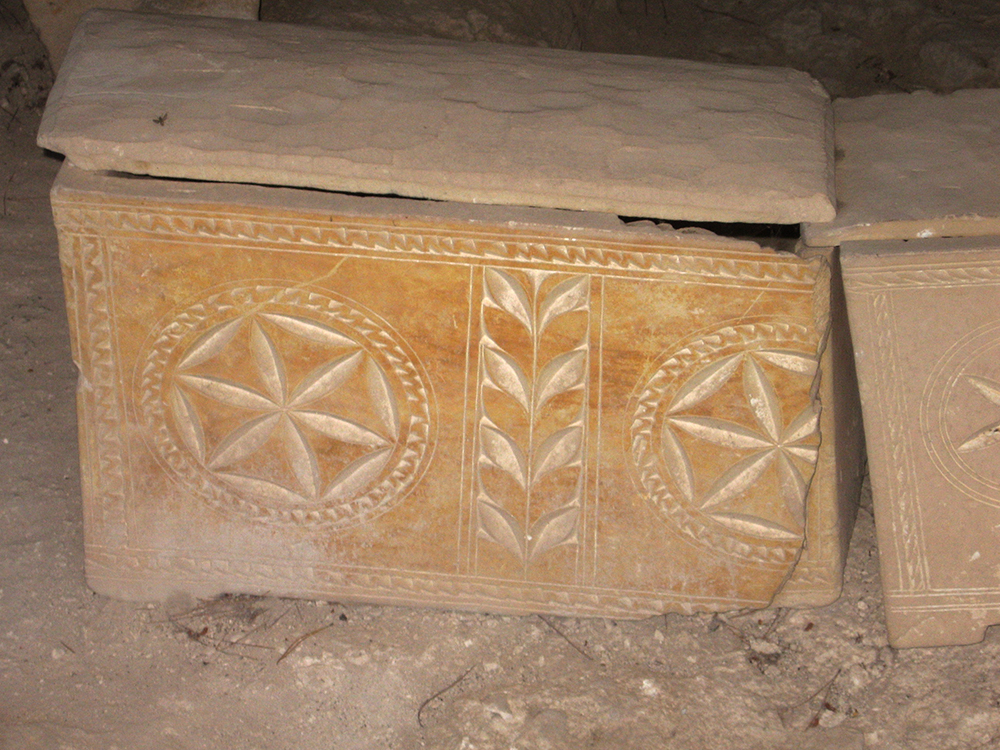
An ossuary that was used to store the bones of the deceased after the body had decayed. The body would be laid in a tomb for about a year. At the end of that time, family members would return to collect the bones and place them in an ossuary. The box of bones would then be placed in a tomb along with the bones of other deceased family members. The burial chamber, or burial slab, could be used over and over through many generations since each body only remained on the slab until it had decomposed.
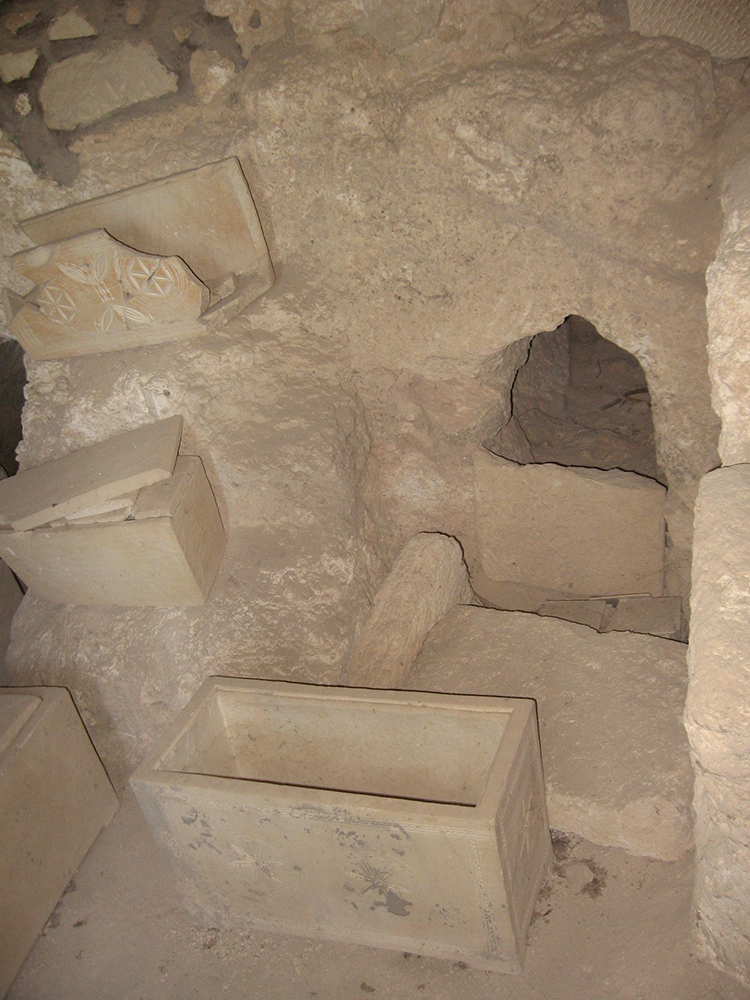
Ossuaries were placed in the front of a tomb. This photo shows a tomb from around the time of Jesus. The tombs of Old Testament times were cut in a slightly different way, and sometimes included a hole or opening under the burial bench where the bones would be placed. As each person died their bones would be collected from the burial bench and laid in the compartment underneath, along with those of their ancestors. In other words, the dead person’s bones would be gathered and placed with the bones of their fathers. After that whole generation had been gathered to their fathers, another generation grew up ... – Judges 2:10